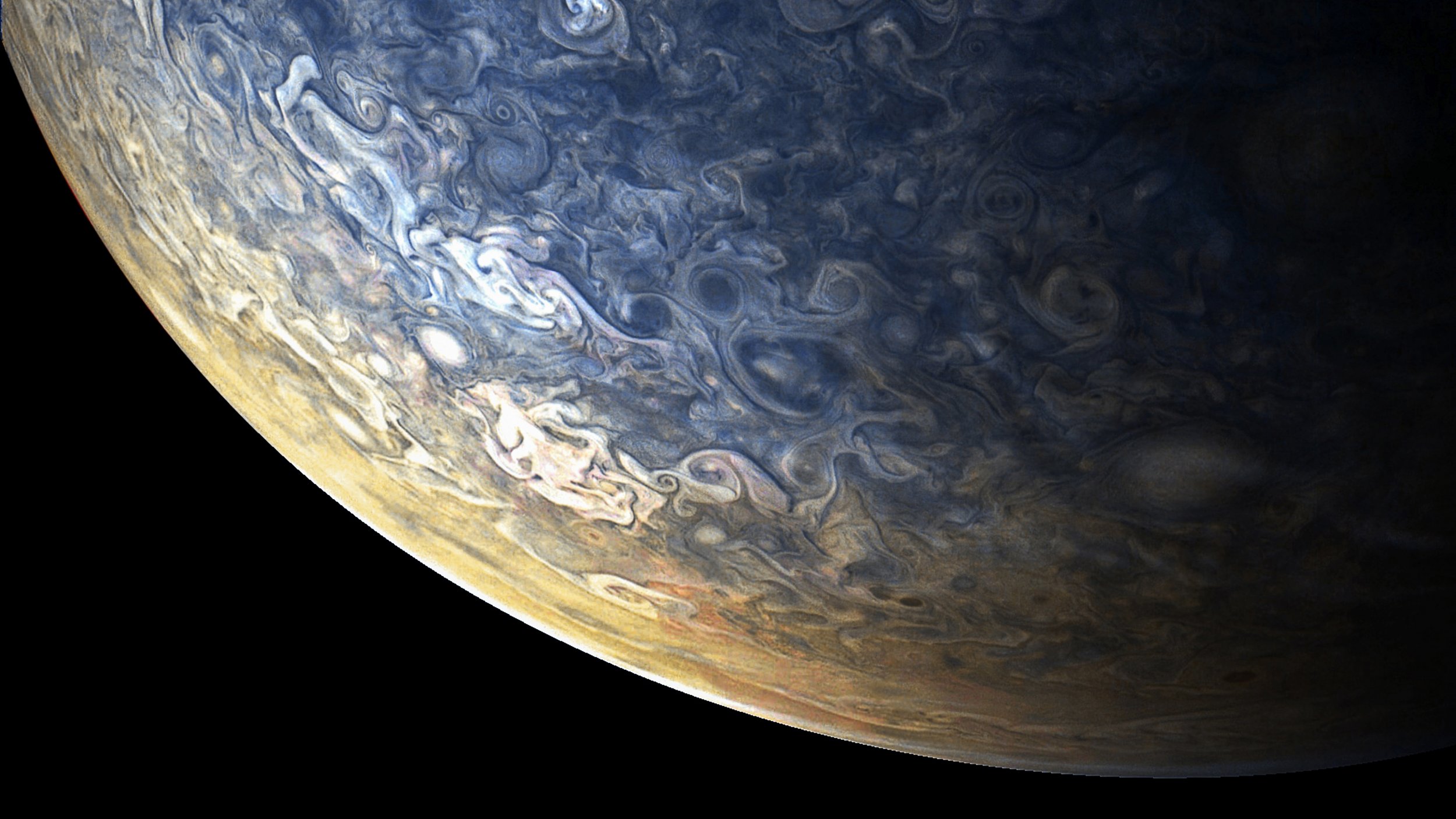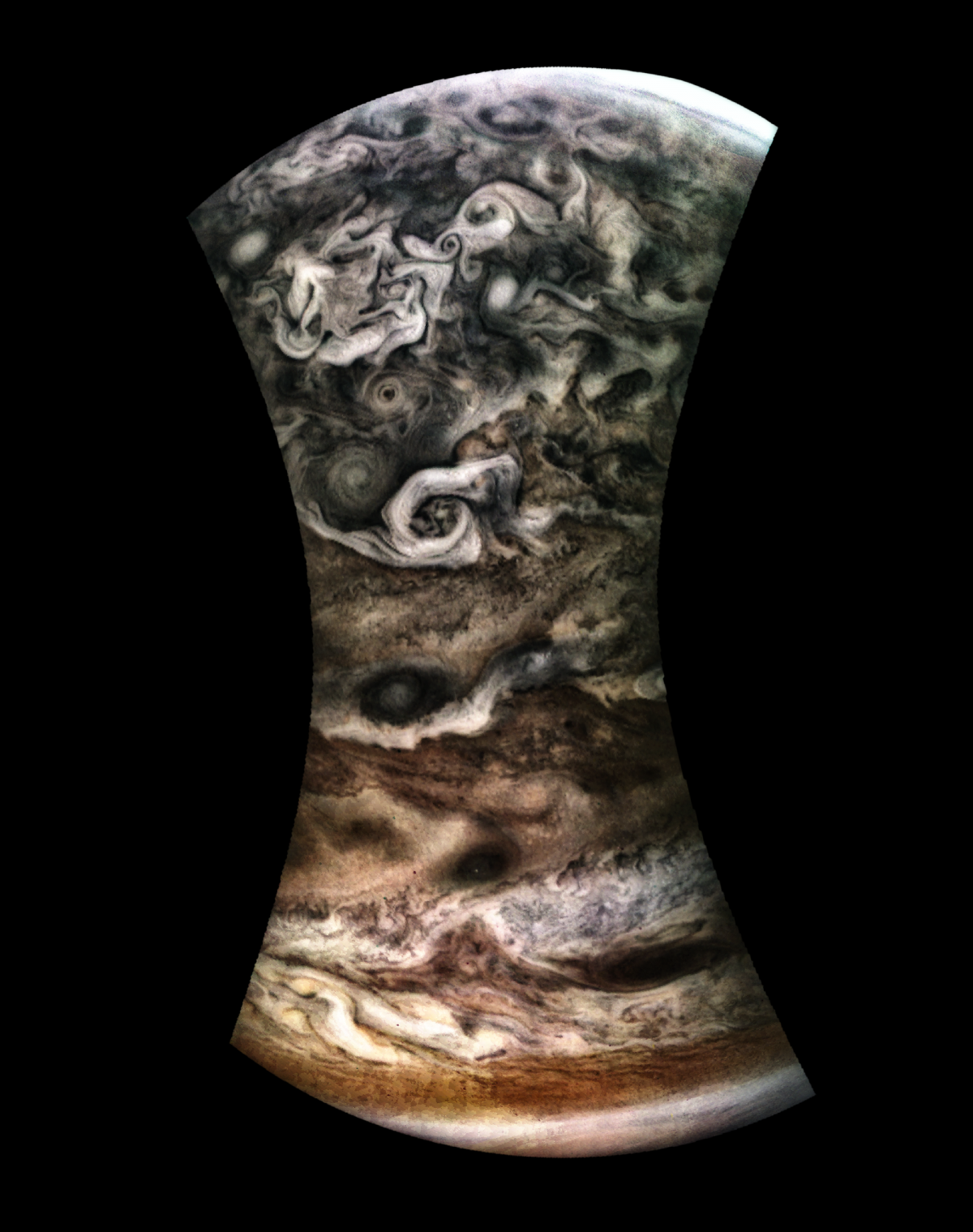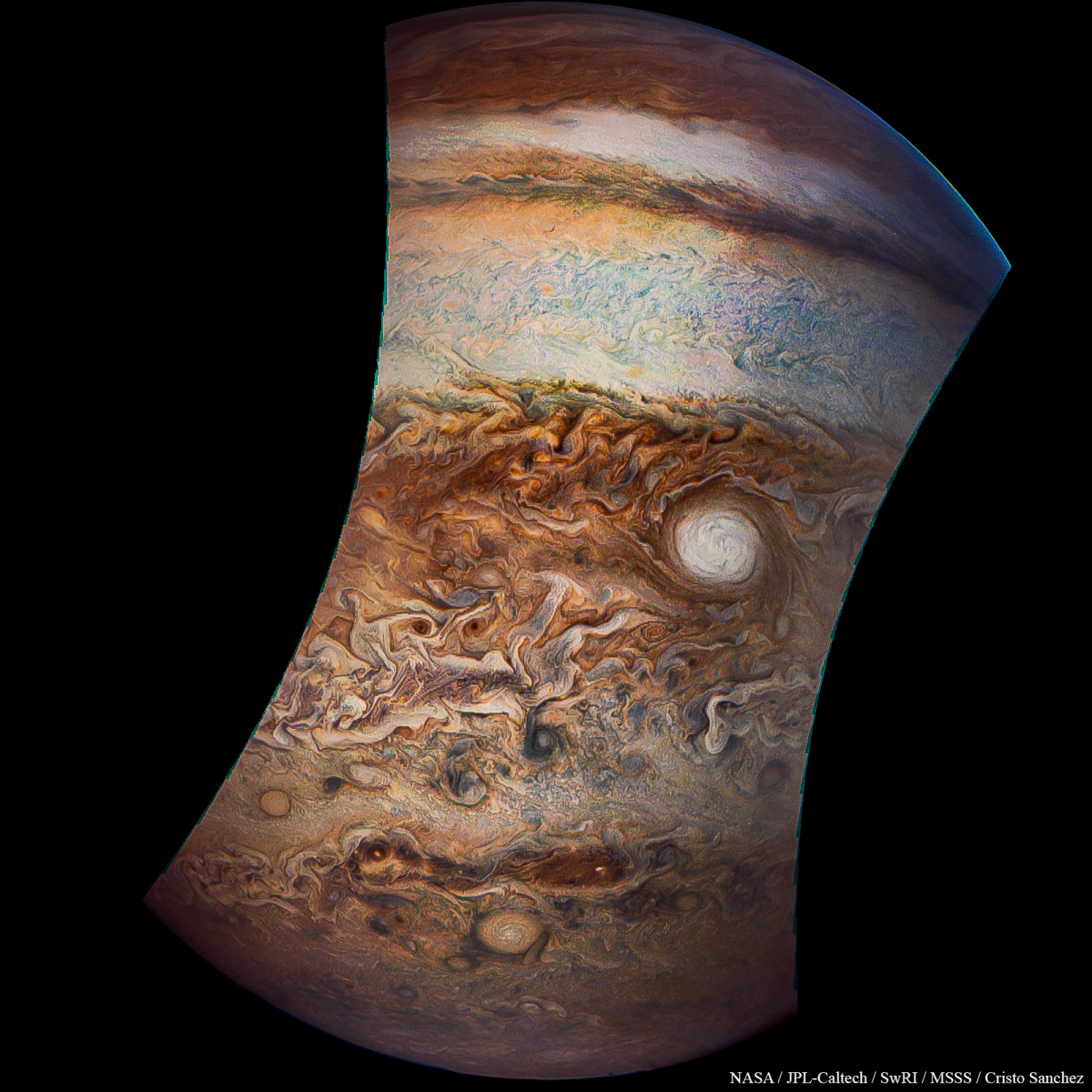
On October 24, NASA's Juno spacecraft completed its ninth close pass over the gas giant. That's exciting news for scientists, of course, but their discoveries typically take longer to announce. But for those of us who like our gratification a little more instantaneous, the close flyby brought another boon: a whole new batch of absolutely stunning photographs of the largest planet in our solar system.
The Juno team announced new raw images from its camera on November 6. But the real magic happens after space-lovers around the world get their hands on the images, bringing out their details and making the planet's colors easier to appreciate. Where the raw images are stuck in a muted palette and are fragmented by the spacecraft's flight plan and camera angles, the processed images drop jaws and inspire awe.
New #JunoCam raw images from my latest #Jupiter flyby are available now. Download, process + share https://t.co/ijHwy72xXp #citizenscience pic.twitter.com/9hxZ3sf2GC
— NASA's Juno Mission (@NASAJuno) November 6, 2017
That's precisely the task taken on by the JunoCam committee, an online community of space image enthusiasts. And that's actually a new system: traditionally, NASA has done its own image work. But for Juno, they decided to give the power to the people, even letting the community decide what features to photograph each time the spacecraft swings over the planet.

For this close pass of Jupiter, the spacecraft was particularly focused on gathering data with its microwave radiometer, which can analyze about 250 miles down into the planet's atmosphere. Studying microwave radiation will let the scientists calculate how much water Jupiter's clouds hold.

"We have no idea what we're going to see because nobody's ever seen this region before, so it's going to be a surprise to all of us when we get the information back," Michael Janssen, one of the lead scientists behind the microwave radiometer, said in a video produced by NASA before the spacecraft launched. "We expect to discover all sorts of new things."
Juno has already determined that Jupiter has a stronger and less predictable magnetic field than scientists had realized and that the planet's giant auroras don't work quite the way they had thought.

Juno arrived at Jupiter in July of 2016 and has been looping around the planet once every 53 days since then. The mission is booked up through July 2018 for 12 science orbits, of which this was the eighth. But at that point, the scientists behind Juno can ask NASA to extend the mission, and many missions do get extended—which means there's a good chance there will be plenty more stunning images to come.
Uncommon Knowledge
Newsweek is committed to challenging conventional wisdom and finding connections in the search for common ground.
Newsweek is committed to challenging conventional wisdom and finding connections in the search for common ground.
About the writer
Meghan Bartels is a science journalist based in New York City who covers the science happening on the surface of ... Read more
To read how Newsweek uses AI as a newsroom tool, Click here.








